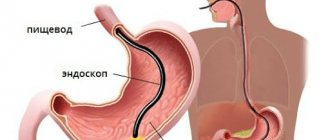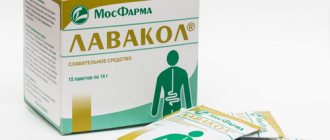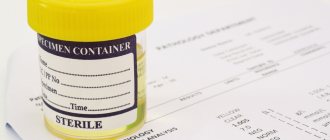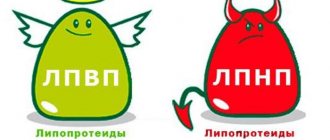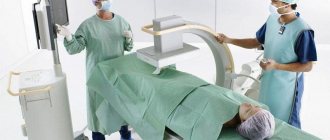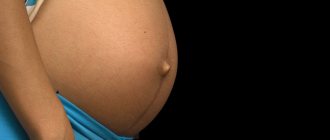Full text of the article:
Colon cleansing with enemas and castor oil is one of the traditional methods of preparing for colonoscopy.
Three days before the test it is necessary to exclude from the diet:
- Iron supplements and activated carbon
- Products containing small seeds: grains, grapes, kiwi, poppy seeds, sesame seeds, cumin, apples, oranges, tomatoes, berries.
- Beets, borscht, greens.
- Substances that can stain the intestinal mucosa
If you suffer from constipation, you need to take the laxatives you usually use every day. You can even slightly increase their dose.
If you suffer from constipation and have not taken laxatives, you must start taking laxatives 3 days before the procedure.
Note:
self-preparation only with enemas (without castor oil) at home is not effective! You will not be able to prepare sufficiently, the research may be painful and not informative!
Classic preparation for colonoscopy:
- On the day before the test, eat only liquid soup for lunch.
- At 15:00-17:00 hours, take 40-50 grams of castor oil.
- In the evening at 20:00 and 21:00, do 2-3 cleansing enemas of 1 liter of cool (about 20 degrees) water.
- Dinner should be light: yogurt, soft cottage cheese.
- On the day of the examination, you can have a light breakfast in the morning, only if the examination is before 11:00, you can drink any liquids. If the test is later than 11:00, only liquid porridge or cottage cheese is allowed. food masses may end up in the colon by the time of the study.
- On the morning of the study, two cleansing enemas of 1 liter of cool water.
If your weight is more than 80 kg, you can increase the number of cleansing enemas.
Pears, enemas, syringes for washing the vagina, nose, giving enemas, suctioning liquids and other household needs. They are also intended for irrigation, irrigation for personal purposes, giving enemas to children and rinsing the nasopharynx.
Playlist of our YouTube channel about douches, pears, enemas:
All products have a registration certificate and a sanitary and epidemiological certificate.
All types of syringes are on sale: - bulbs with a soft tip (type A) can be used for rinsing the nose, removing fluid (suction) in the postoperative period, for personal hygiene purposes. -syringes (bulbs) with a plastic or soft tip (type B) can also be used for irrigation, rinsing the body and performing enemas. - gynecological syringe is used for treatment and irrigation of the vagina for hygienic purposes.
Enema syringe pear
Disinfect syringes used for medical purposes with boiling water for 25-35 minutes. Immerse the tip in a 6% hydrogen peroxide solution at a temperature of 18*C. After this, the rubber syringe is ready for use for medical procedures.
Syringes - enemas can only be used for aqueous, aqueous-alcoholic solutions and do not exceed contact with such solutions for more than 15 minutes. They should not be used for oil solutions, and it is also not recommended to store drugs in them.
Before using syringes with a soft tip, we advise you to lubricate it with glycerin, not petroleum jelly (vaseline is prohibited).
How to give an enema correctly: After you have prepared the enema syringe for use, according to our recommendations, draw the prepared decoction, medicinal substance or just warm water into the bulb through the spout, slightly squeezing the syringe at the widest point. Lie on your side, as is most comfortable for you, with your knees slightly bent. Bring the bulb to the anus and carefully insert the tip. Slowly, slowly, press the bulb and inject liquid. Do not strain or make sudden movements.
How to rinse the vagina with a syringe: Prepare a special irrigation syringe with a balloon for use according to our instructions. Remember to boil the tip for 5-7 minutes. Dip the nozzle of the syringe into the prepared medicinal solution or just warm water, pressing the base to draw the required amount of solution. Lie on your back in the bath, with your feet on the sides of the bath. Bring the syringe to the vagina slowly and carefully insert the tip. Introduce the liquid carefully, relax, the liquid should not enter the uterus.
Medical syringes for washing the vagina
How to do an enema correctly?
To get the proper effect, it is important to buy the right enema - Esmarch's mug (with a lock).
The significant disadvantages of this method include the fact that it is quite difficult to carry out the procedure without outside help. You will have to simultaneously inject the liquid, control the flow, and then hold it in the intestine for several minutes, while simultaneously holding the tip in the desired position, then remove the tip without getting up and close the tubes if the water is not completely introduced into the intestine. Therefore, think about an assistant or immediately switch to modern methods of preparation with drugs.
Follow the instructions carefully:
- It is necessary to fill the Esmarch mug with 1-1.5 liters of cool (about 20 degrees) water. Cold water increases intestinal motility and bowel cleansing will be more effective.
- Then you need to hang the mug at a height of at least 1.5 meters from the floor.
- Open the latch/lock and wait until all air leaves the system and only water flows - lock the latch/lock.
- Lubricate the tip of the tube with Vaseline or a special cream
- It is optimal to lie comfortably on your left side
- Insert the tube into the anus
- Open the latch/lock at the tip.
- We introduce the entire volume of liquid from Esmarch's mug.
- Roll over onto your back and lift your pelvis.
- Then slowly roll over onto your right side, breathe deeply several times, then relax.
- Turns from side to side can be repeated several times. If you have the urge to defecate, be patient for 1-2 minutes and calmly go to the toilet.
- We repeat the cycle.
It is important that the method of preparation for a colonoscopy is recommended by the doctor who ordered the study, since only he knows exactly the initial state of your body and can prescribe the optimal/acceptable method of preparation.
How to give an enema at home
09.09.2021
An enema (klystir) is a procedure, the essence of which is the introduction of special substances into the rectum for medical purposes.
It is performed for various indications, for example, with prolonged (more than two days) stool retention, in case of poisoning with chemicals,
low-quality products, and more.
Depending on the purpose of the enema, it is classified into:
• Medicinal. Designed to cleanse the body, rid it of harmful substances and negative conditions of the body. • Nutritious . Designed to introduce various nutrients into the body that will help it cope with the disease. • Diagnostic . It is used in X-ray examinations and involves the introduction of contrast agents into the body.
Performing an enema at home
To carry out an enema at home, you need to prepare the following tools: Esmarch's mug, rubber bulb, oilcloth, Vaseline.
Everything you need can be purchased at the pharmacy. When performing an enema, only boiled clean water is used, its temperature will vary
depending on the purpose of the procedure. In any case, it should not exceed 40 degrees; it is recommended to use
special thermometer. To enhance the effect, you can add a little shavings of baby soap to the water.
There are many recipes for preparing an enema solution, using ingredients such as milk, soda, various plants and flowers.
A detailed description of their effects will take up too much space, so in this case it is better to use special literature.
The place for the enema should be comfortable; a lounger covered with oilcloth is best suited for it.
To gently insert the Esmarch mug into the anus, its tip must be lubricated with Vaseline or nourishing cream. Air is released from the tube.
After administration, it is necessary to monitor the amount of incoming water; it should not be more than two liters. At the end of the clyster, to enhance
washing effect, it is recommended to perform certain gymnastic exercises. For example, the “candlestick” exercise or throwing your legs behind your head.
A comfortable position for self-administration of the clyster is to sit on all fours with your head down. The tip of the tube should be inserted into the anus approximately
by 7.5 centimeters, the tap needs to be opened and monitored for its flow from the mug into the intestines . Carrying out an enema should not be too frequent, since
During this procedure, the body is subjected to significant stress. In this case, instead of a therapeutic one, you can get a completely opposite effect.
Contraindications for enema
The described procedure is not recommended for general weakness of the body, headaches, acute abdominal pain , or the presence of cancer.
gastrointestinal tract, after recent serious illnesses, such as heart attack or stroke. There are also other contraindications,
To clarify them, it is recommended to first consult a doctor .
Published in Articles without category Premium Clinic
Children's multidisciplinary medical center for children from 0 to 18 years old
07/22/2016 However, even despite the simplicity of this procedure, to achieve an effective result it must be carried out with great responsibility so as not to damage the baby’s delicate intestines. It should be noted that you should not get carried away with enemas, and carry out procedures only in cases of extreme necessity, when all known methods have been tried, but to no avail. If bowel problems occur too often in a child, it is necessary to identify and treat the cause of their occurrence. In addition, small children simply need to manage their abdominal muscles on their own without outside help. Types of enemas and rules for their implementation An enema is a procedure for introducing liquid into the rectum for the purpose of diagnosis or treatment. Depending on the effect that needs to be obtained, enemas are divided into: Cleansing - their purpose is to free the intestines from gases and feces. Depending on the age of the child, enemas are performed in different volumes: for newborns - 25 ml, at the age of 1-2 months - 30-40 ml, for babies 2-3 months - 50 ml, 2-4 months - 60 ml, at 6 months - 75- 100 ml, 6-9 months - 100-120 ml, 9-12 months - 120-180 ml, 1 year -150 ml, from 1 to 2 years -200-250 ml, from 2 to 5 years - 300 ml, from 5 to 9 years – 400 ml, over 10 years – 0.5 l. The enema liquid should be at a temperature no lower than 28 and no higher than 38 degrees. Medicinal - they are done only as prescribed by doctors in order to influence the medications on the intestinal lining. The temperature of the enema liquid should be 40-41° C. As a rule, through this type of enemas, the baby is given a decoction of chamomile in cases of flatulence, a 2% solution of chloral hydrate (for convulsions), antibiotics in the form of a suspension in warm fish oil, rosehip oil or sea buckthorn (for colitis, for frequent vomiting) and some other medications. Therapeutic enemas are given after cleansing ones. Nutrients - most often given for incessant bouts of vomiting. As a rule, weak glucose solutions and saline solutions are administered. Oily ones – as a laxative for children. Sunflower, hemp or vaseline oil heated to body temperature is injected into the rectum. The effect is achieved after approximately 8-10 hours, so this type of enema is best given at night. In rare cases, I use such enemas in cases of inflammation in the large intestine. Performing an enema on infants Before the procedure, you should thoroughly wash your hands with soap. To carry out a cleansing enema for children (infants, infants), it is necessary to first sterilize the rubber balloon by boiling for half an hour. As an enema, children are given boiled water at a temperature slightly lower than the child’s body temperature (older children can use cooler water). Then fill the balloon with the required volume of water, depending on the age of the baby, and thoroughly lubricate the tip of the balloon with Vaseline or vegetable oil. After this, you need to lay an oilcloth and a diaper on top, on which you place the child on the back and lift the legs up to the stomach, bending them at the knees. Older children (1-6 years old) are placed on their left side, and their legs are pulled towards their stomach. After this, spreading the buttocks, very carefully insert the tip of the balloon into the rectum, after releasing the air from it. A soft and short tip must be inserted completely, a harder and longer one must be inserted to a depth of 4-5 cm. After inserting the tip, slowly squeeze the balloon to introduce water into the intestines. The fluid should be administered as the child inhales. If the child begins to scream, the administration of water should be temporarily suspended. As soon as the required volume of liquid is introduced into the child’s intestines, the tip is slowly removed without unclenching. After that, the child’s buttocks must be squeezed with both hands and held for about a minute so that the liquid remains in the body as long as possible. Then the child can be turned first on one side, then on the other, on his stomach, which will allow the fluid to be distributed throughout the intestines. After completing the procedure, the child must be washed. After use, the container itself is thoroughly washed, boiled, dried and stored in a closed container. For atonic constipation (lack of intestinal tone), the recommended temperature of the injected fluid should be 18-20°C or even lower, and for spastic constipation (excessive intestinal peristalsis) - 37-38°C. To enhance the effect of the enema, it is allowed to add a little (1 tsp) glycerin or vegetable oil to the injected water. An enema should be given to a child during the first three years of life only with the permission of a doctor. After all, frequent constipation or unexplained abdominal pain can be signs of acute appendicitis, volvulus, pneumonia, strangulated internal hernia and some other serious diseases. Using an enema on your own can only be done in cases where it is necessary to reduce body temperature in sick children with high fevers, and also when it is known for sure that constipation in a child is caused by dietary mistakes. Performing an enema for older children. To carry out a cleansing enema in children over five years old, use an Esmarch mug with a volume significantly larger than a balloon (1.5-2 l). The child is placed on his left side, with his legs pulled towards his stomach. Esmarch's mug, after releasing the air by opening the tap, is filled with boiled water at a temperature of 20-22 degrees Celsius. The mug itself is hung on a special tripod at a distance of 50-75 cm from the child. The tip is also lubricated with Vaseline or oil and, slightly spreading the buttocks, it is gradually introduced into the intestine without pressure. At the beginning, it should be inserted a short distance forward towards the navel, then back, parallel to the tailbone, to a depth of 5-10 cm. The rate of fluid flow can be adjusted using a special clamp or tap placed on a rubber tube. After giving the child an enema, the tip must be removed and the child must be allowed to lie down for ten minutes, preferably turning over, until the desire to empty the intestines arises. Contraindications for an enema. Enemas to cleanse the child’s body are contraindicated in cases of suspected acute appendicitis, intestinal bleeding, intestinal obstruction, inflammatory process in the anus and other surgical diseases, also in cases of rectal prolapse and in the first days after surgery on the abdominal organs. In cases where the enema did not give the desired result, do not be alarmed. Water introduced into the intestines will not cause harm to health. The procedure can be repeated after six hours.
When is an enema necessary?
An enema is a proven and effective means of cleansing. It cannot relieve health problems, such as constipation or hemorrhoids. But in some cases it is necessary.
Before examination and examination by a proctologist
If you are planning to make an appointment with a proctologist to diagnose diseases of the anus, including internal or external hemorrhoids, then an enema must be done:
- A clean intestine is the key to the highest quality and accurate diagnosis.
- The absence of stool and gases in the rectum will help you feel more confident during the examination.
It is necessary to prepare not only for the first examination, but also for all follow-up visits. This will allow the doctor to most accurately assess the dynamics of your condition during treatment or after its completion.
If you are planning to treat hemorrhoids
Preparation for hemorrhoid removal includes examining the patient, establishing bowel movements, stopping food intake 5-6 hours before the procedure, and using a cleansing enema.
